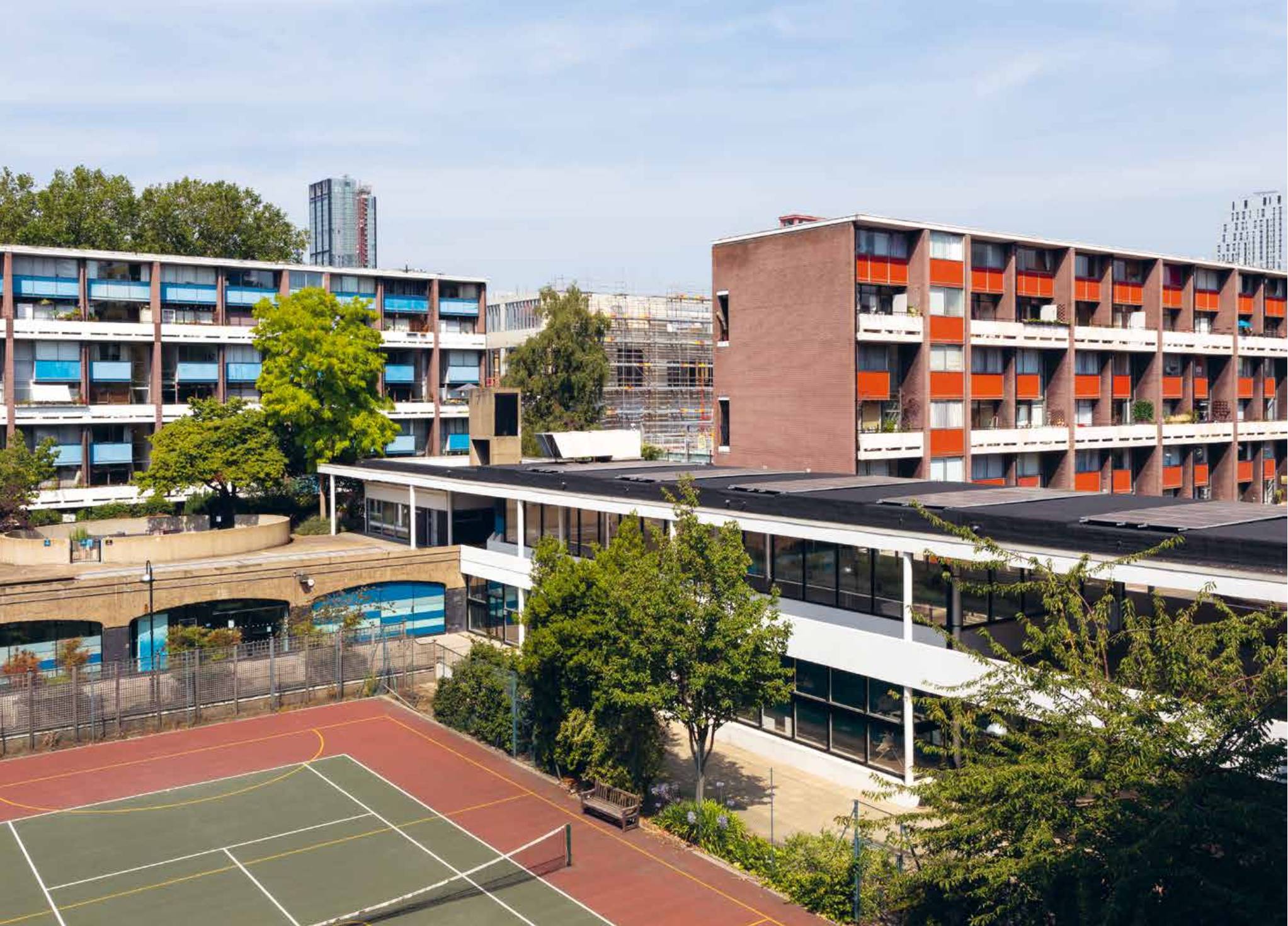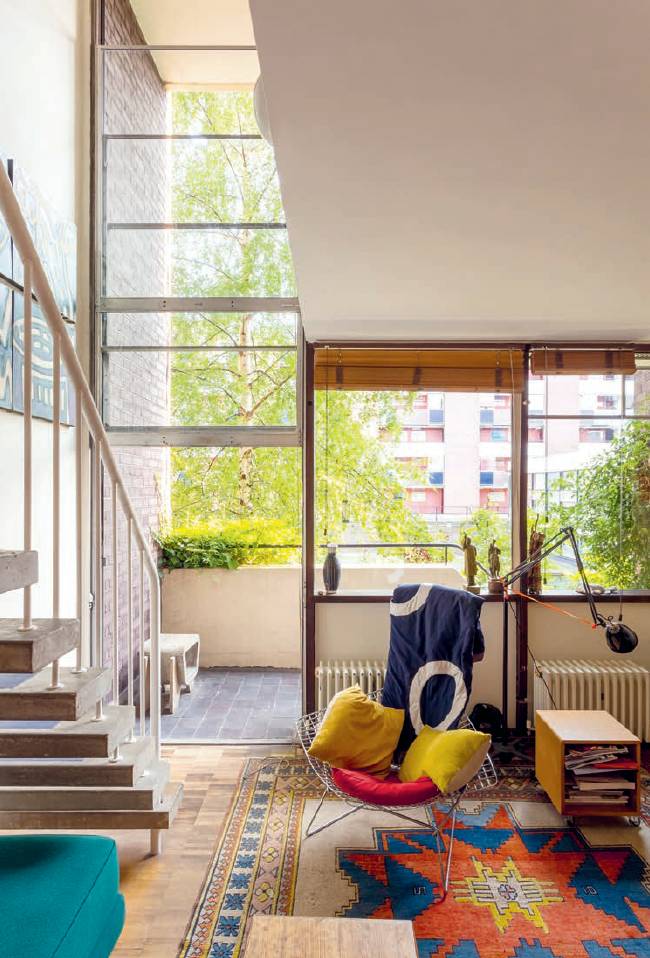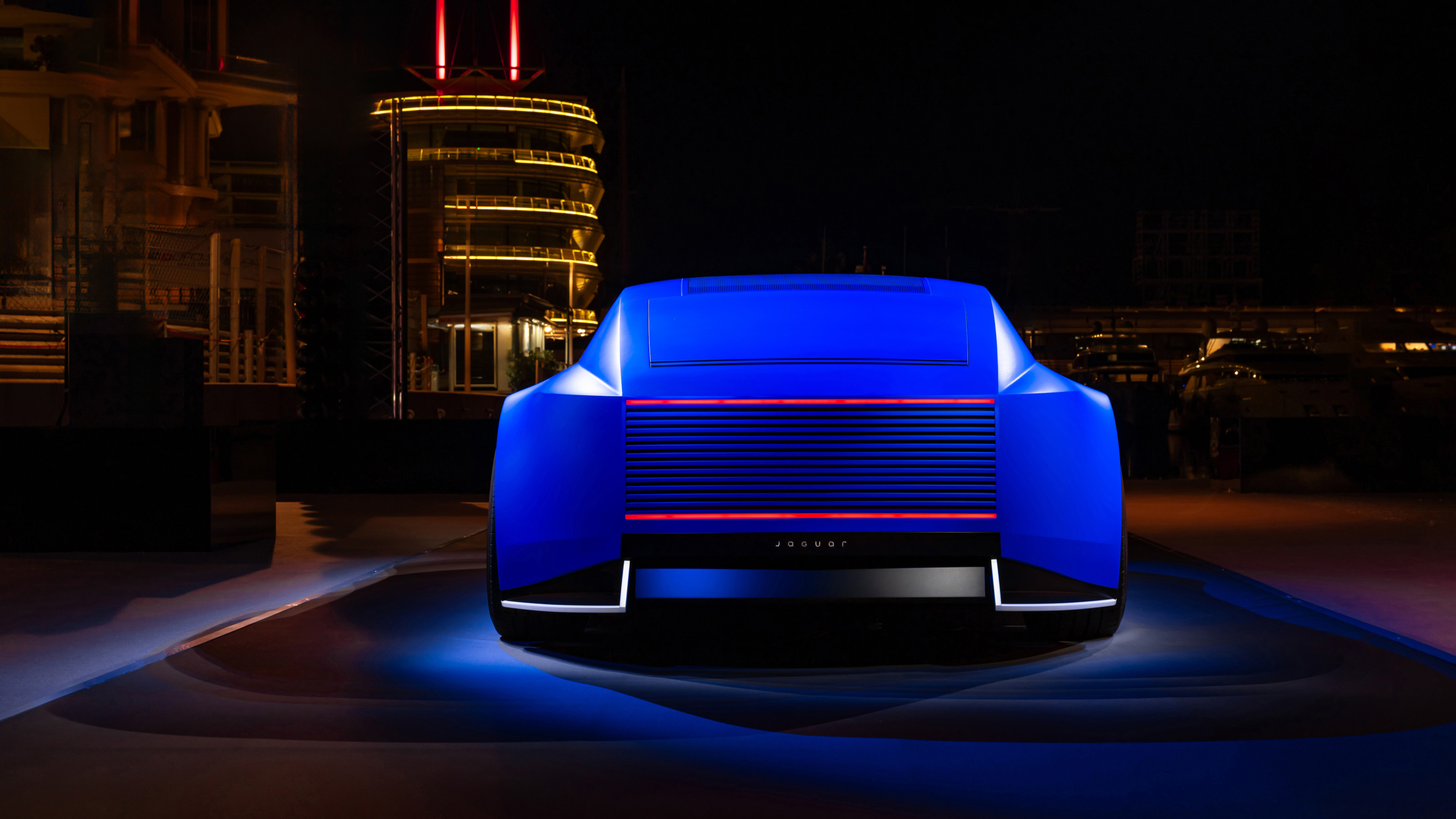Stefi Orazi’s Golden Lane Estate monograph reveals London’s architectural and social history
A new monograph by Stefi Orazi on London's Golden Lane Estate talks about modernist architecture, and social and architectural history

Mary Gaudin - Photography
Stefi Orazi has become the unofficial chronicler of London’s housing heyday. Her 2015 architecture book Modernist Estates tapped into the revival of interest in the high-quality local authority buildings of modernist architecture that sprouted across the capital in the post-war building boom. She followed it up with a monograph on The Barbican Estate, that rare and enduring example of an expansive private housing development lovingly deployed with a pure modernist ethos. Orazi, a long-time Barbican resident, has now turned her pen to its near neighbour, the Golden Lane Estate.
Whereas the Barbican (built between 1965 and 1976, with other elements of the site not fully completed until 1982) was a complex, intricate project, with up to 140 different apartment types, Golden Lane was its forerunner. Designed by the same firm, Chamberlin, Powell & Bon, it had a very different remit. Orazi, who has spent a decade as a resident, notes that although Golden Lane Estate was designed for workers, not professionals, it was not so different from the Barbican in terms of ethos, character, and attention to detail.

Golden Lane can trace its origins back to the 13th century, but it was the Second World War that set the scene for an all-new project. In 1952, Geoffry Powell won a competition held by the City Corporation to build workers’ housing in this area, once the heart of London’s rag trade but utterly devastated in the Blitz, which destroyed almost a third of the City of London’s buildings.
Powell joined forces with Christopher Bon and Peter Chamberlin, and their design mixed the density of high-rise living with a reinstatement of long-lost street patterns. The main tower, Great Arthur House, sits alongside low-rise apartment buildings, including Hatfield House and Crescent House. With just over 550 flats housing around 1,500 people, the plans included facilities such as a pool, a tennis court, a nursery and even guest apartments and the estate’s own police station.

Orazi’s book includes an introduction by the architectural historian Elain Harwood, an acknowledged expert on the work of Chamberlin, Powell & Bon and a tireless chronicler of 20th century architecture.
Archive imagery is beautifully paired with contemporary architectural photography by Mary Gaudin and a series of residents’ portraits by Julian Ward. These accompany Orazi’s interviews with contemporary residents, along with a view into a select number of the many different apartment types that make up the estate.

The book is a rich combination of architectural and social history, tracing the rise and fall and rise of the estate’s fortunes, as its popularity dipped before surging back as the quality, space and location on offer became apparent in the face of ever-declining contemporary standards.
Receive our daily digest of inspiration, escapism and design stories from around the world direct to your inbox.
Now Grade II and Grade II* listed, and with many flats in private ownership, the Golden Lane Estate is still an exemplar of how to build well in the urban context: encourage open space with a sense of community and shared ownership, a diversity of typologies and design details, and construction quality that elevates the quotidian into something that remains highly desirable, despite its flaws.
INFORMATION
Golden Lane: An Urban Village, Stefi Orazi
Batsford Books, £25
Jonathan Bell has written for Wallpaper* magazine since 1999, covering everything from architecture and transport design to books, tech and graphic design. He is now the magazine’s Transport and Technology Editor. Jonathan has written and edited 15 books, including Concept Car Design, 21st Century House, and The New Modern House. He is also the host of Wallpaper’s first podcast.
-
 RIBA reveals more three shortlisted structures for 2025’s House of the Year award
RIBA reveals more three shortlisted structures for 2025’s House of the Year awardThree more houses join the shortlist for the UK’s highest domestic architectural accolade. We explore the Triangle House, Amento and Jankes Barn
-
 JLR is a mainstay of modern motoring luxury, but do car brands need creative figureheads?
JLR is a mainstay of modern motoring luxury, but do car brands need creative figureheads?With Gerry McGovern departing from Jaguar Land Rover, what next for the Indian-owned, British-built house of brands?
-
 Royal Huisman brings superyacht scale to a new age of sail with the 81M Sky project
Royal Huisman brings superyacht scale to a new age of sail with the 81M Sky projectRoyal Huisman’s The Sky project is a mission to build the world’s tallest sloop – we explore the technical challenges of creating a sailing superyacht
-
 The Architecture Edit: Wallpaper’s houses of the month
The Architecture Edit: Wallpaper’s houses of the monthFrom wineries-turned-music studios to fire-resistant holiday homes, these are the properties that have most impressed the Wallpaper* editors this month
-
 David Kohn’s first book, ‘Stages’, is unpredictable, experimental and informative
David Kohn’s first book, ‘Stages’, is unpredictable, experimental and informativeThe first book on David Kohn Architects focuses on the work of the award-winning London-based practice; ‘Stages’ is an innovative monograph in 12 parts
-
 This modernist home, designed by a disciple of Le Corbusier, is on the market
This modernist home, designed by a disciple of Le Corbusier, is on the marketAndré Wogenscky was a long-time collaborator and chief assistant of Le Corbusier; he built this home, a case study for post-war modernism, in 1957
-
 Louis Kahn, the modernist architect and the man behind the myth
Louis Kahn, the modernist architect and the man behind the mythWe chart the life and work of Louis Kahn, one of the 20th century’s most prominent modernists and a revered professional; yet his personal life meant he was also an architectural enigma
-
 The Architecture Edit: Wallpaper’s houses of the month
The Architecture Edit: Wallpaper’s houses of the monthFrom Malibu beach pads to cosy cabins blanketed in snow, Wallpaper* has featured some incredible homes this month. We profile our favourites below
-
 Explore Tom Kundig’s unusual houses, from studios on wheels to cabins slotted into boulders
Explore Tom Kundig’s unusual houses, from studios on wheels to cabins slotted into bouldersThe American architect’s entire residential portfolio is the subject of a comprehensive new book, ‘Tom Kundig: Complete Houses’
-
 Three lesser-known Danish modernist houses track the country’s 20th-century architecture
Three lesser-known Danish modernist houses track the country’s 20th-century architectureWe visit three Danish modernist houses with writer, curator and architecture historian Adam Štěch, a delve into lower-profile examples of the country’s rich 20th-century legacy
-
 The Architecture Edit: Wallpaper’s houses of the month
The Architecture Edit: Wallpaper’s houses of the monthThis September, Wallpaper highlighted a striking mix of architecture – from iconic modernist homes newly up for sale to the dramatic transformation of a crumbling Scottish cottage. These are the projects that caught our eye